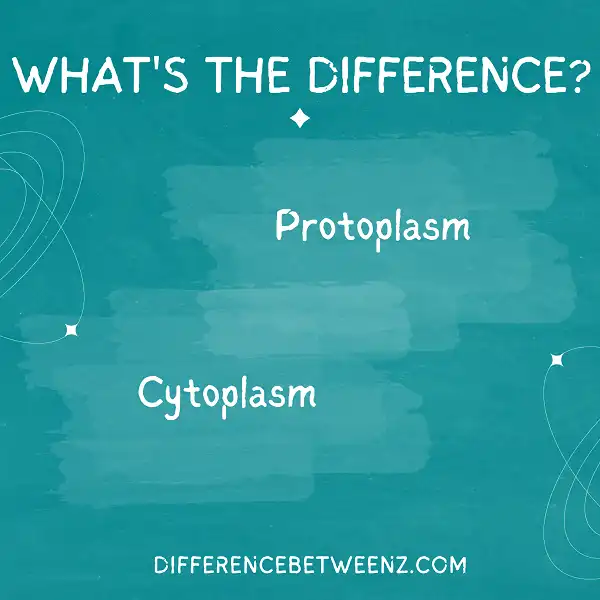Cytoplasm and protoplasm are often used interchangeably, but they are actually two different things. The cytoplasm is the liquid inside the cell membrane, while protoplasm is the living substance of the cell. Protoplasm is made up of cytoplasm, organelles, and DNA. Cytoplasm surrounds and supports the protoplasm.
The composition and function of cytoplasm and protoplasm vary from species to species. For example, red blood cells lack a nucleus or other organelles because their sole purpose is to transport oxygen throughout the body. In contrast, liver cells have a large number of organelles because that is their primary function. This article will explore the difference between cytoplasm and protoplasm in more detail.
What is Cytoplasm?
The cytoplasm is a clear, jelly-like substance that fills the interior of cells and serves as the site of many important cellular activities. It is mostly composed of water, but it also contains a variety of other molecules, including proteins, nucleic acids, lipids, and carbohydrates.
Cytoplasm plays a number of important roles in cells. It provides a medium in which chemical reactions can take place, it helps to maintain the cell’s shape, and it serves as a storage site for nutrients and other molecules.
The cytoplasm also contains the cell’s specialized organelles, such as the nucleus and mitochondria. In addition, it houses the cell’s genetic material, which is stored in the form of DNA molecules. The cytoplasm is thus a vitally important component of cells.
What is Protoplasm?
Protoplasm is a term used to describe the living contents of a cell. It includes everything from the cell membrane to the nucleus, and it is the key element that makes a cell alive.
The protoplasm is made up of various molecules, including proteins, carbohydrates, lipids, and nucleic acids. These molecules work together to perform all of the functions necessary for life, such as metabolism, reproduction, and growth.
Protoplasm is also responsible for some of the most essential functions of a cell, such as maintaining its shape and moving materials in and out of the cell. In short, protoplasm is the key ingredient that makes a cell alive and able to function.
Difference between Cytoplasm and Protoplasm
Cytoplasm and Protoplasm are two terms that are often used interchangeably, but they actually have different meanings.
- Cytoplasm refers to the jelly-like material that fills the cells of living organisms.
- This substance is made up of water, salts, and enzymes.
- Protoplasm, on the other hand, refers to all of the living matter in a cell, including the cytoplasm, nucleus, and organelles.
- In other words, protoplasm is everything that makes a cell alive.
Both cytoplasm and protoplasm are essential for the survival of cells, but they are not the same thing. The cytoplasm is a subset of protoplasm, and it is the part of the cell that is responsible for most of the cell’s chemical reactions.
Conclusion
So, what’s the difference between cyanobacteria and green algae? Cyanobacteria are prokaryotes while green algae are eukaryotes. Green algae have cellulose in their cell walls while cyanobacteria do not. Green algae store starch granules in their cytoplasm, but cyanobacteria do not. Finally, the two types of organisms have different methods for photosynthesis- cyanobacteria use phycobilisomes while green algae use chloroplasts. Hopefully, this article has cleared up any confusion about these two microorganisms!


